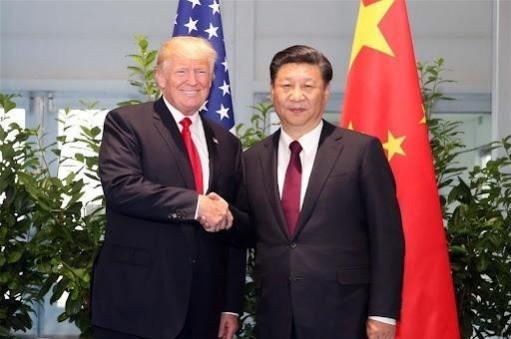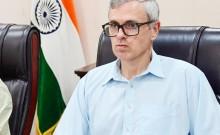
On October 30, 2025, at Busan's Gimhae Air Base, Presidents Donald Trump and Xi Jinping convened for a 100-minute summit that blended spectacle with strategic calculation. Trump described the meeting as "amazing" and rated it "12 out of 10," claiming agreement "on almost everything." Xi emphasized "overall stability" and "cooperative prospects," projecting composure amid underlying tensions.
Far from a breakthrough, the encounter produced a tactical truce: targeted concessions that address acute pressures without resolving the structural contradictions of U.S.-China competition. With the two economies commanding more than 40 percent of global GDP, the Busan agreement demands rigorous analysis of its immediate terms, latent asymmetries, and implications for the international order.
The accord rests on a series of reciprocal adjustments. U.S. tariffs on Chinese imports fall from 57 percent to 47 percent, with fentanyl-related duties reduced from 20 percent to 10 percent. These steps ease domestic inflation and acknowledge the opioid crisis, which claims over 100,000 American lives annually.
In exchange, China suspends rare-earth export controls for one year, securing supply for U.S. semiconductors, electric vehicles, and defense systems in a domain where Beijing controls 80 percent of global refining. Soybean purchases resume, restoring a $14 billion export channel vital to American agriculture.
Additional provisions include a pause on Chinese levies against U.S. vessels and exploratory talks on Nvidia chip restrictions. Collectively, these measures mitigate damage from a trade war that has cost the global economy an estimated $200 billion since 2018. Financial markets responded with restraint: Asian indices declined 0.6 percent, U.S. futures remained flat, and the yuan weakened slightly, signaling relief rather than confidence in sustained momentum.
Deeper examination reveals profound imbalances. Trump's public exuberance obscures America's enduring advantages in technology and finance, yet the concessions are time-bound and reversible. The rare-earth moratorium expires in twelve months, soybean commitments lack enforceable quotas, and fentanyl pledges echo unfulfilled obligations from the 2020 Phase One agreement.
Xi's language of "mutual respect" and China's "qualitative advancement" under the 15th Five-Year Plan masks domestic challenges, including 5.2 percent GDP growth, 17 percent youth unemployment, and lingering property-sector distress. Beijing gains breathing space to diversify mineral supply chains through Belt and Road initiatives in Africa and Latin America, while core disputes over intellectual property, subsidies, and technology transfer remain untouched. Annual bilateral trade exceeds $700 billion, yet this interdependence heightens vulnerability, accelerating the bifurcation of global innovation ecosystems.
Geopolitical context sharpens the summit's contours. Trump's decision to resume U.S. nuclear testing after a 33-year moratorium, announced days earlier, projects resolve to allies in Seoul and Taipei but risks provoking escalation. Xi's delegation, led by Foreign Minister Wang Yi and Vice Premier He Lifeng, arrived as representatives of a multipolar order rather than supplicants. Taiwan received no mention, reflecting Trump's strategic choice to prioritize negotiable issues.
References to Ukraine "cooperation" proved rhetorical, given Beijing's alignment with Moscow. Discussions on artificial intelligence and advanced semiconductors yielded no commitments, preserving U.S. export controls and China's parallel development of indigenous capabilities. The result is a fragmented technological landscape spanning hypersonics, undersea infrastructure, and quantum computing, where competition increasingly defines the rules of engagement.
A forward-looking assessment exposes the limitations of unilateral approaches. Trump's regional engagements with Japan and South Korea on semiconductors and shipbuilding advance "friendshoring," yet without inclusive frameworks, they risk creating exclusionary blocs. China's dominance in solar capacity (60 percent globally) and electric vehicles offers potential for climate collaboration, but mutual distrust, manifested in investment screening and data regulations, forecloses progress.
Sustainable architecture requires multilateral initiatives: joint AI governance with the European Union and Japan, integrated public-health responses to synthetic drugs, and supply-chain coordination involving India and ASEAN nations. Absent such mechanisms, planned reciprocal visits, Trump to Beijing in April 2026 and Xi to the United States thereafter, may devolve into ceremonial interludes that postpone rather than resolve underlying tensions.
Critical scrutiny underscores broader costs. U.S. tariffs impose an average annual burden of $1,300 per household, exacerbating the inequalities that fuel political polarization. China's "common prosperity" narrative conceals systemic repression, from Xinjiang to Hong Kong, issues conspicuously absent from the Busan agenda.
Developing economies, caught between dollar hegemony and yuan internationalization, face fragmented trade networks that widen global disparities. Authentic leadership transcends transactional gains; it constructs a rules-based order in which competition drives innovation, yielding shared standards for quantum technologies, pandemic preparedness, and Arctic stewardship.
The Busan summit functions as a temporary stabilizer, not a structural pivot. It averts immediate disruption yet leaves the edifice of U.S.-China relations precarious. Future summits in 2026 will test whether leaders can transform episodic détente into enduring equilibrium. History will measure them not by the deals they strike, but by their capacity to forge cooperation from the crucible of rivalry.
[Major General Dr. Dilawar Singh, IAV, is a distinguished strategist having held senior positions in technology, defence, and corporate governance. He serves on global boards and advises on leadership, emerging technologies, and strategic affairs, with a focus on aligning India's interests in the evolving global technological order.]

















